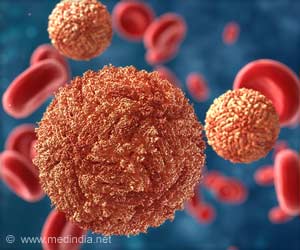Blood flow within tumors could be reduced while leaving the rest of the brain unchanged by using low-intensity electrical stimulation.

‘The electrical stimulation resulted in a significant reduction of blood flow to the tumor, with no changes in the rest of the brain.’
Read More..




"Many patients with brain tumors have limited therapeutic options, most of which come with severe side effects," said Santarnecchi, who is also an Assistant Professor of Neurology at Harvard Medical School. Read More..
"Our study found that electrical stimulation resulted in a significant reduction of blood flow to the tumor, with no changes in the rest of the brain. Given the safety profile of non-invasive brain stimulation, the ease of its application, its relatively low cost and the possibility of combining it with other drug-based therapies, our findings might lead to non-invasive therapeutic options for patients with brain tumors."
Non-invasive brain stimulation - also known as transcranial electrical stimulation (tES) - is a 20- year old, FDA-approved technology that is used to treat a number of psychiatric conditions, including treatment-resistant depression. Low-intensity electrical fields are delivered to the brain through the skull via electrodes placed on the scalp.
While many researchers continue to investigate the safe and relatively low-cost treatment's potential to treat psychiatric disorders and to enhance cognitive skills such as memory and concentration, this study represents the first time tES has been tested in patients with brain tumors.
Santarnecchi and colleagues recruited 50 patients with brain tumors willing to participate. Given the delicate patient population, eight participants were able to complete the trial - six with glioblastoma, an aggressive tumor that originates in the brain, and two with metastatic tumors that originated in the lung.
Advertisement
"This technique still requires further testing to optimize frequency and duration of treatment and to personalize protocols for individual patients fully," said Santarnecchi. "Future studies will investigate the impact of repeated tES sessions, evaluate the potential combination of tES with other cancer therapies, and assess tES in other forms of brain tumors."
Advertisement














